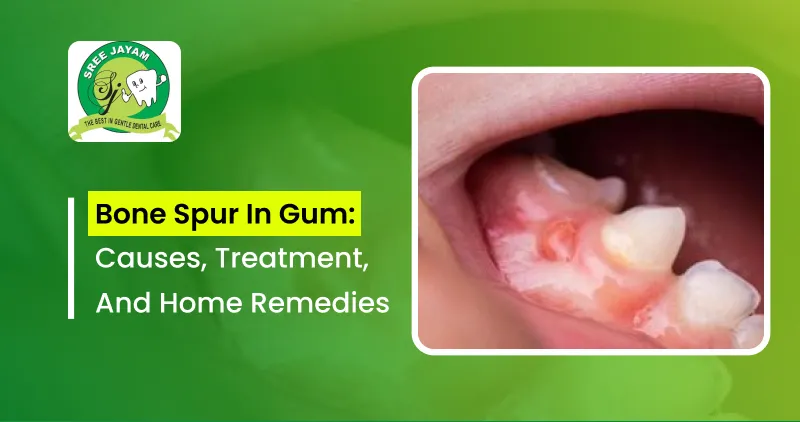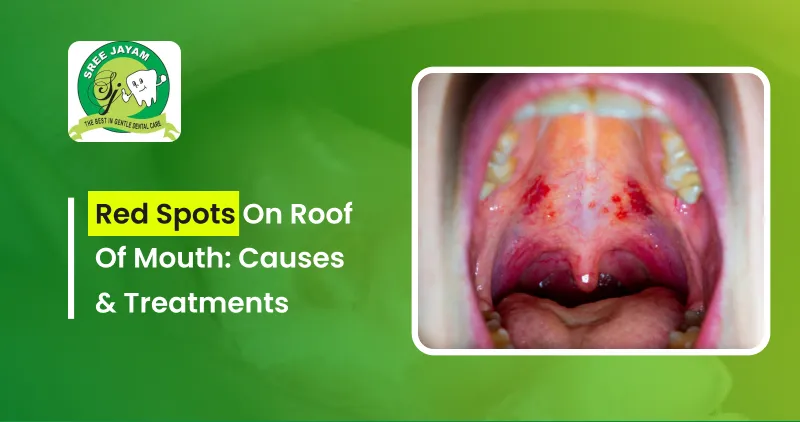
Normal Socket After Tooth Extraction vs Dry Socket
Tooth extraction is a common dental procedure, but what follows after is just as important—the healing process. Understanding the difference between a normal socket after tooth extraction and a dry socket helps you know whether your recovery is on track or if you need to see a dentist.
After a tooth is pulled, your body quickly forms a blood clot in the empty socket to protect the bone and nerves underneath. This clot protects the underlying bone and nerves, supporting proper healing. But if the clot gets dislodged or doesn’t form properly, it leads to a painful condition called dry socket.
In this blog, we will see the difference between a normal socket and a dry socket, what a normal socket looks like after tooth extraction, how the healing progresses day by day, the causes and symptoms of both normal and dry sockets, what a dry socket feels and looks like, and how to treat and prevent it.
Table of Contents
What Is a Normal Socket After Tooth Extraction?
After a tooth is removed, your body starts healing immediately by forming a blood clot in the socket. This clot is dark red and jelly-like. It seals the area and prevents bacteria from entering, which is a clear sign of a normal socket after tooth extraction.
As healing continues, the clot turns into white or cream-colored granulation tissue, which later develops into gum and bone tissue.
Key Signs of a Normal Socket:
- Visible dark clot that stays in place
- Mild pain that improves daily
- Gradual swelling reduction
- A white healing layer within 3–5 days
- No bad smell or taste
- No visible bone
Symptoms of a Normal Healing Socket
Healing normally includes:
- Pain that fades after 2–3 days
- No foul smell or bad taste
- A whitish layer over the clot indicates tissue growth
- Healthy gum colour (pink, not inflamed)
- No exposed bone
These symptoms suggest a healthy recovery and proper clot protection.
How Does a Normal Socket Look?
A normal socket after tooth extraction typically appears as a blood clot covering the empty tooth space, with pink or red tissue surrounding it. Here’s what to expect:
- Day 1–2: A dark red blood clot fills the socket. It’s a sign of healthy healing.
- Day 3–7: The clot stays in place, and soft tissue starts to grow over it. Mild swelling and discomfort are common but improve gradually.
- After 1 week, New tissue begins forming inside the socket, and the gum edges start to close.
- No foul odour, no visible bone, and no extreme pain are signs that healing is progressing normally.
In contrast, if the socket appears empty, bone is visible, or pain worsens, it could be a sign of dry socket, which needs dental attention.
What Is a Dry Socket?
Dry socket, or alveolar osteitis, occurs when a blood clot doesn’t form properly or comes out too soon. This exposes the bone and nerves and causes intense pain.
Dry socket is most common 2 to 5 days after extraction, especially in lower wisdom teeth. It is more painful than normal healing and needs dental care.
Symptoms of Dry Socket After Tooth Extraction
Signs that you may have a dry socket include:
- Severe pain starting 2–5 days post-extraction
- Pain that spreads to your ear, jaw, or temple
- Foul smell or metallic taste
- An empty-looking socket with no clot
- Visible bone in the socket
- Pain doesn’t improve with over-the-counter medication
Causes of Dry Socket
You may develop dry socket due to:
- Smoking or using tobacco
- Spitting or rinsing forcefully within 24 hours
- Using a straw (suction dislodges the clot)
- Poor oral hygiene
- Birth control pills (affect clotting)
- Infections or trauma during extraction
These factors can increase the chance of losing the clot, resulting in dry socket after tooth extraction.
What Does Dry Socket Look Like?
A dry socket is visibly different from a healing socket. Here’s how you can tell:
- No clot present
- White bone is visible
- Surrounding gums may be red and swollen
- Sometimes, there’s pus or a foul odour
- Pain is sharp and radiating
How To Treat Dry Socket?
Dry socket should always be treated by a dentist, not with home remedies alone.
Common treatments include:
- Cleaning the socket to remove food or debris
- Applying medicated dressings (often with clove oil)
- Prescribing painkillers or antibiotics
- Replace the dressing every few days until healed
Pain usually improves within 1–2 days of treatment, but complete healing can take up to 2–3 weeks.
Can You Get Dry Socket With Stitches?
Yes. Even if you have stitches after extraction, you can still get a dry socket. Stitches close the gum tissue but not the socket itself. The blood clot inside must remain undisturbed.
If you smoke, rinse too soon, or use a straw, the clot can dislodge—even with sutures.
How Long Does Dry Socket Last?
With treatment, dry socket pain lasts 5 to 7 days. Without treatment, symptoms can continue for up to 2 weeks or longer.
Pain usually peaks between day 2 and day 4 and becomes more bearable once treatment starts.
Is Dry Socket Dangerous?
While not usually dangerous, dry socket is very painful and delays the healing process. If left untreated, it can lead to:
- Infections in the socket
- Swollen lymph nodes
- Fever and chills
- Extended healing time for gum and bone
Seek prompt dental care to prevent further complications.
When Is Dry Socket No Longer a Risk?
Dry socket is no longer a risk when:
- The blood clot is stable
- You feel less pain each day
- There’s no foul smell or exposed bone
- The gum appears to be closing well
It will typically happen around day 7–10, when granulation tissue covers the socket.
Preventing Dry Socket After a Tooth Extraction
Follow these aftercare tips to prevent dry socket:
- Avoid smoking or tobacco for at least 5–7 days
- Don’t use straws
- Avoid spitting or rinsing forcefully within the first 24 hours
- Eat soft, cold, or lukewarm foods
- Rinse gently with warm salt water after 24 hours
- Follow your dentist’s instructions carefully
Protecting the normal tooth socket clot is the most essential part of proper healing.
Dry Socket vs Normal Socket
| Aspect | Normal Socket | Dry Socket |
| Clot | Firm, visible, dark red | Missing or dislodged |
| Pain | Mild, improves in 2–3 days | Severe, radiating, starts 2–5 days post-extraction |
| Smell | No unusual odour | Foul smell or bad taste |
| Appearance | White granulation tissue | Exposed bone, dry socket |
| Healing time | 1–2 weeks | 2–3 weeks or more |
| Treatment | Home care | Dentist visit required |
| Risk | Low if instructions are followed | High with clot disturbance |
Day-by-Day Healing: Normal Socket vs Dry Socket
| Day | Normal Socket | Dry Socket |
| Day 1 | Clots form, mild swelling | Clot may not form; pain may start early |
| Day 2 | Mild discomfort; clot darkens | Pain worsens; the socket may look dry |
| Day 3 | White tissue forms | Severe pain radiates to the ear or jaw |
| Day 4–5 | Healing tissue grows; swelling reduces | Bad odour, visible bone, strong discomfort |
| Day 7 | Socket nearly closed; pain minimal | Pain may persist without treatment |
Conclusion
Knowing the difference between a normal socket after tooth extraction and a dry socket can help you heal comfortably and avoid complications. If you notice severe pain, a foul taste, or visible bone, contact your dentist right away.
By understanding how healing should look and feel and following simple aftercare steps, you can recover smoothly and effectively prevent dry socket.
Frequently Asked Questions
It will appear dark red with a blood clot, followed by a white healing layer after a few days. Pain and swelling will reduce each day.
An empty-looking socket with exposed white bone, no blood clot, and red, inflamed gum tissue.
With proper treatment, dry socket pain lasts 5–7 days. Without treatment, it may last up to 14 days.
A dentist will clean the socket and apply medicated dressings. Pain relief medications may also be prescribed.
Yes. Stitches do not guarantee a clot will form and stay. Aftercare is still essential to avoid dry socket.














